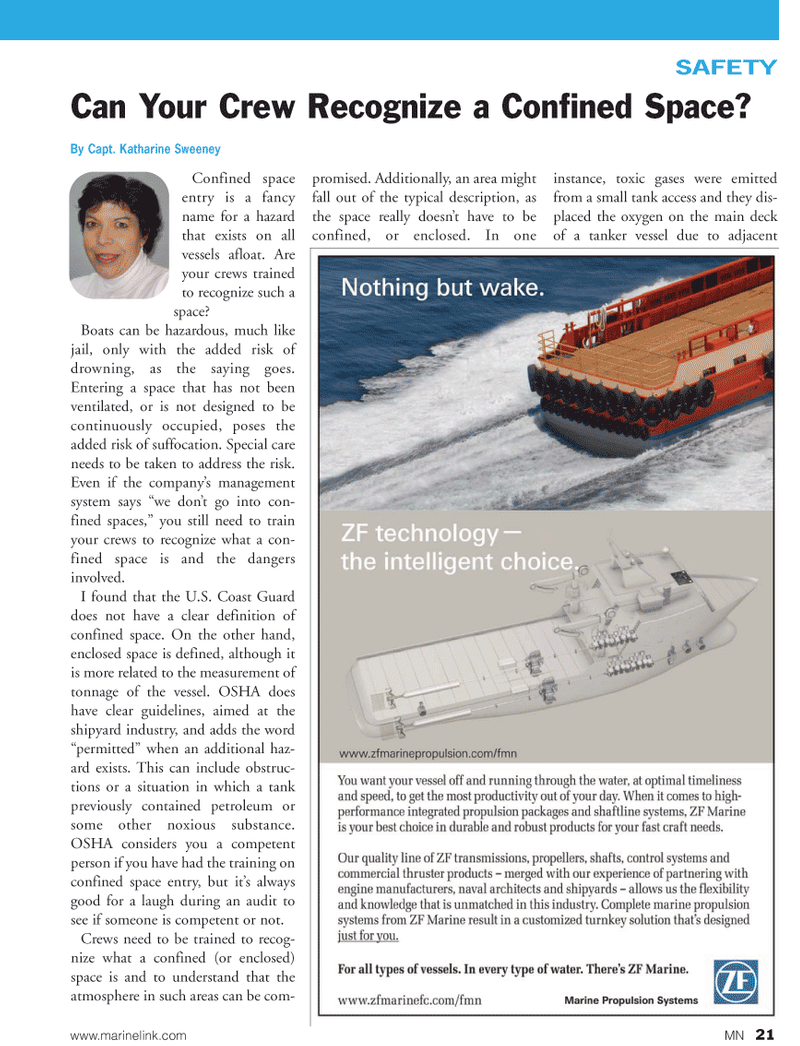
Page 21: of Marine News Magazine (May 2011)
Combat Craft Annual
Read this page in Pdf, Flash or Html5 edition of May 2011 Marine News Magazine
www.marinelink.com MN 21
Confined space entry is a fancy name for a hazard that exists on all vessels afloat. Are your crews trained to recognize such a space?
Boats can be hazardous, much like jail, only with the added risk of drowning, as the saying goes.
Entering a space that has not been ventilated, or is not designed to be continuously occupied, poses the added risk of suffocation. Special care needs to be taken to address the risk.
Even if the company’s management system says “we don’t go into con- fined spaces,” you still need to train your crews to recognize what a con- fined space is and the dangers involved.
I found that the U.S. Coast Guard does not have a clear definition of confined space. On the other hand, enclosed space is defined, although it is more related to the measurement of tonnage of the vessel. OSHA does have clear guidelines, aimed at the shipyard industry, and adds the word “permitted” when an additional haz- ard exists. This can include obstruc- tions or a situation in which a tank previously contained petroleum or some other noxious substance.
OSHA considers you a competent person if you have had the training on confined space entry, but it’s always good for a laugh during an audit to see if someone is competent or not.
Crews need to be trained to recog- nize what a confined (or enclosed) space is and to understand that the atmosphere in such areas can be com- promised. Additionally, an area might fall out of the typical description, as the space really doesn’t have to be confined, or enclosed. In one instance, toxic gases were emitted from a small tank access and they dis- placed the oxygen on the main deck of a tanker vessel due to adjacent
SAFETY
Can Your Crew Recognize a Confined Space?
By Capt. Katharine Sweeney

 20
20

 22
22
